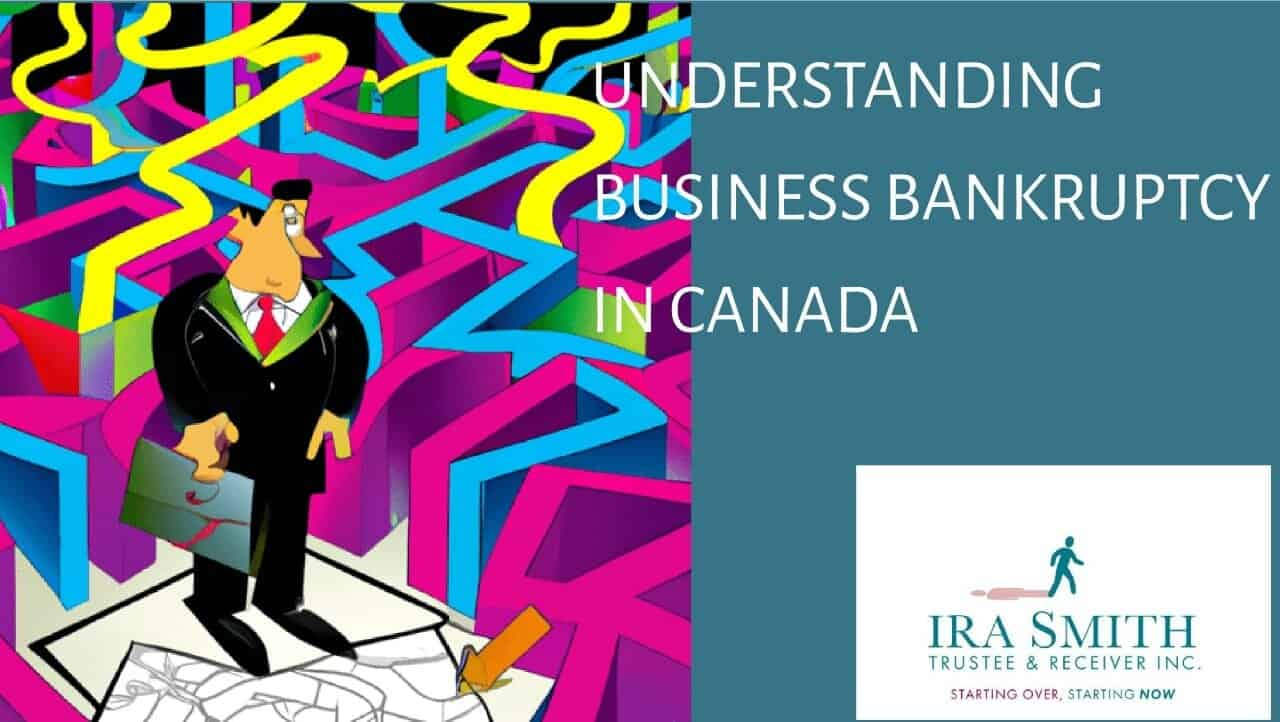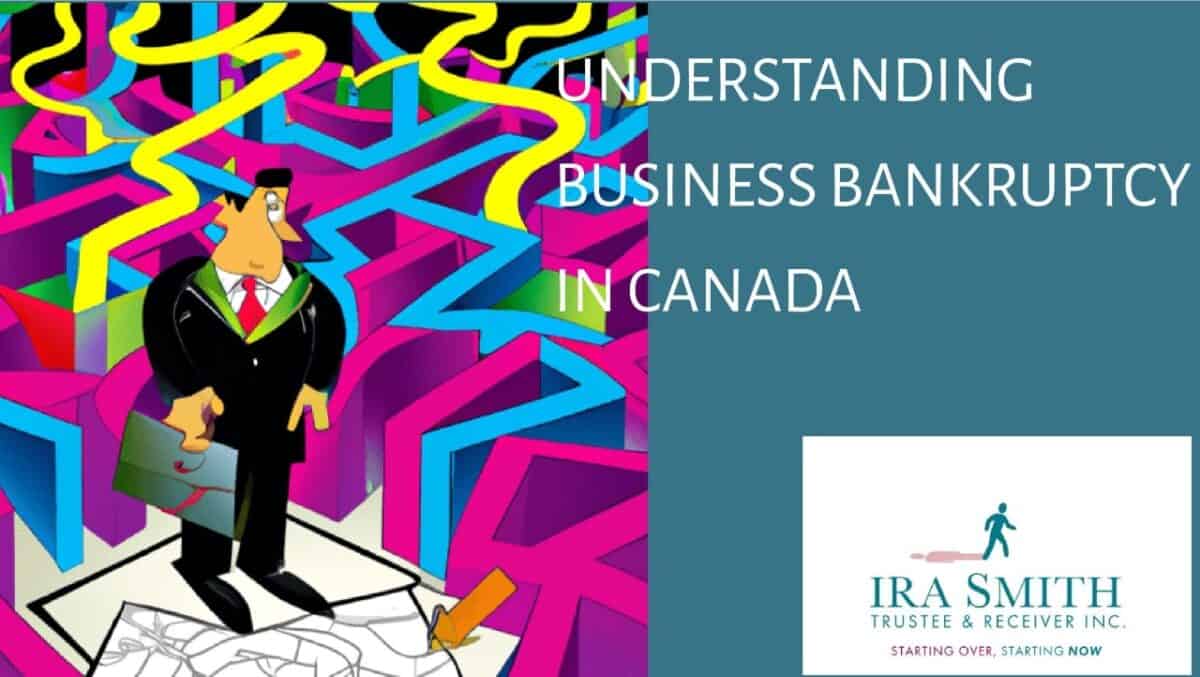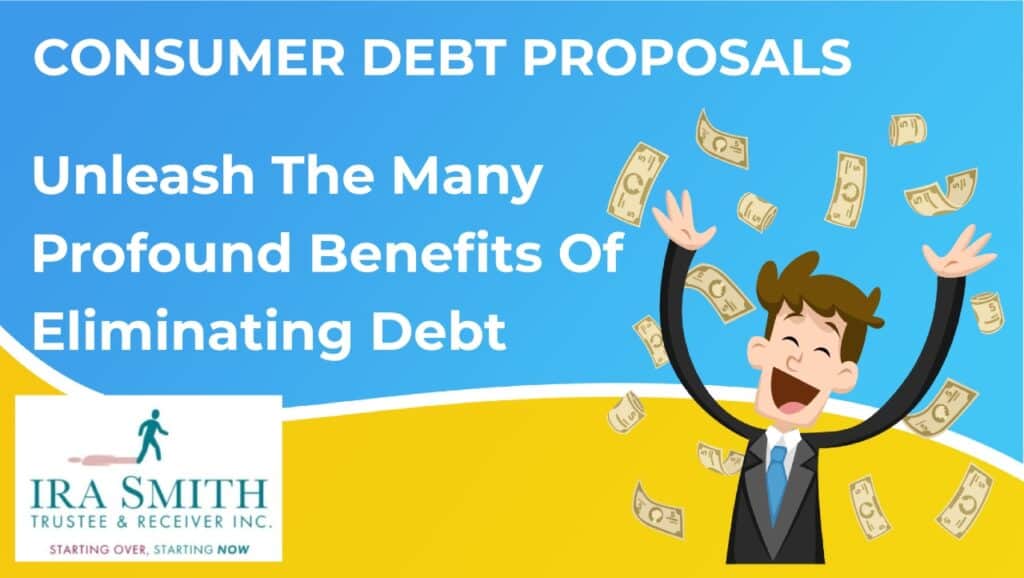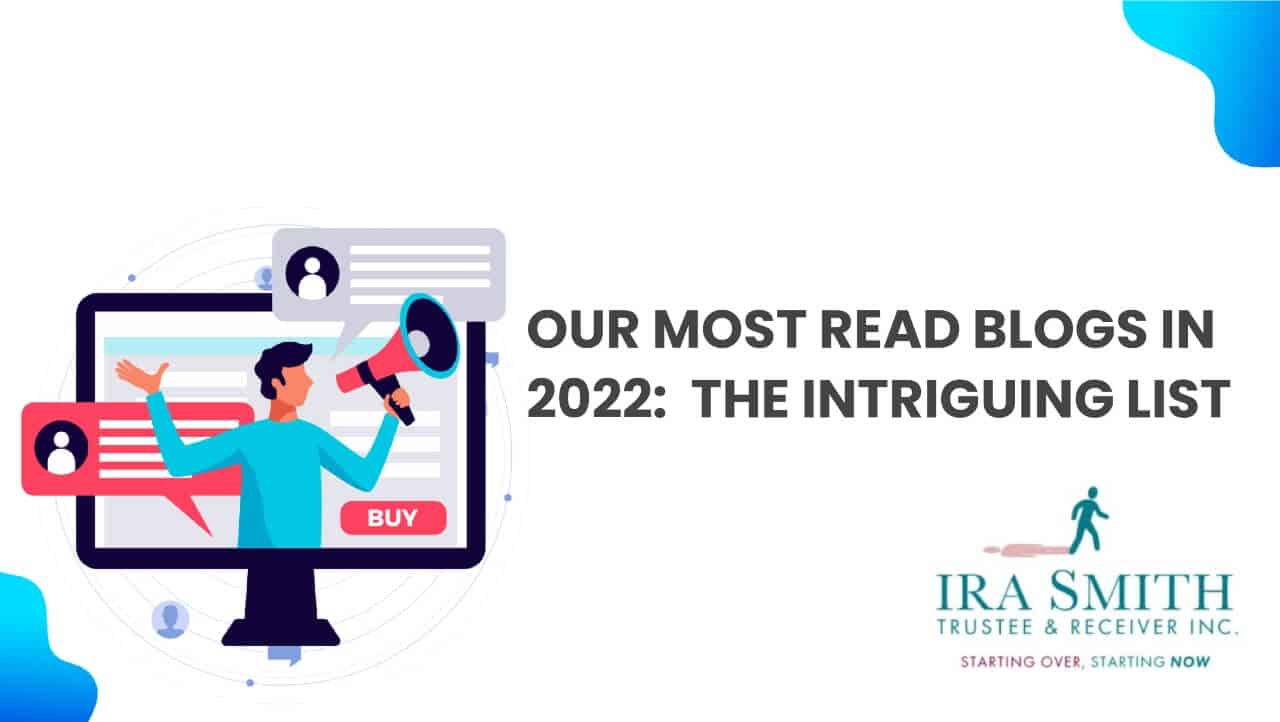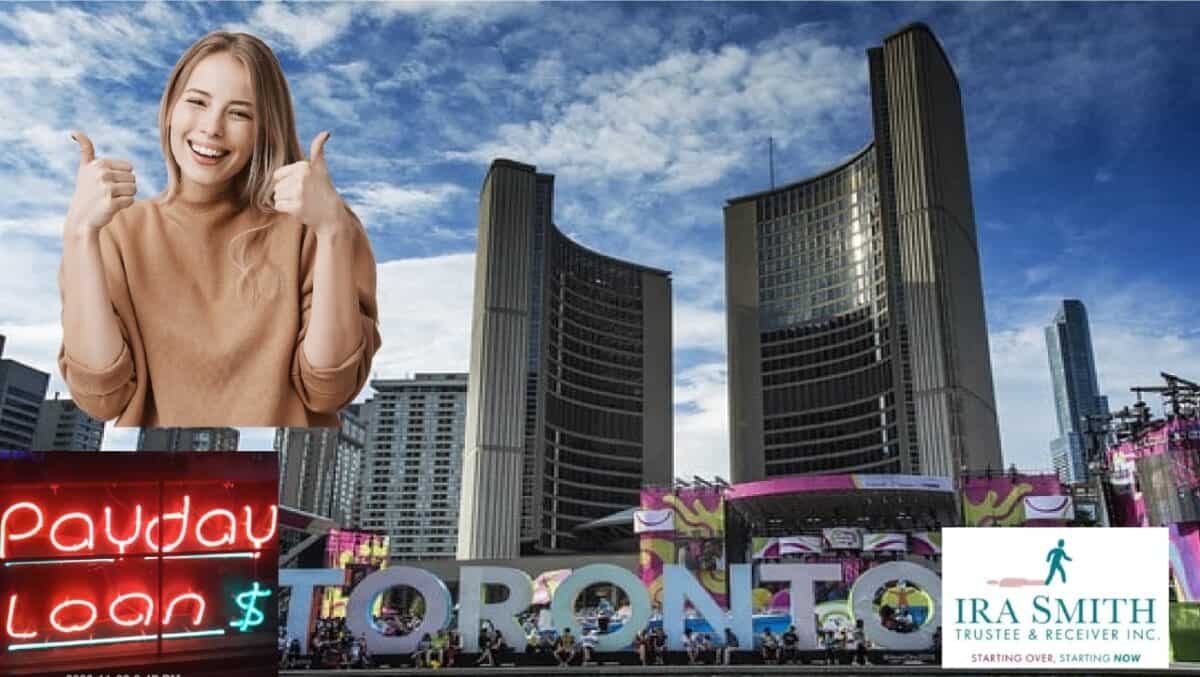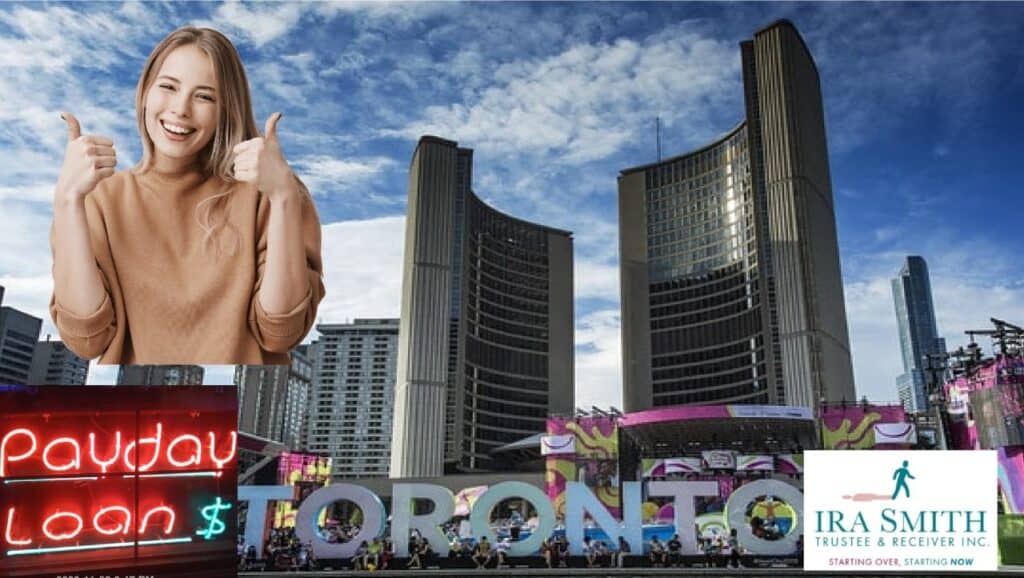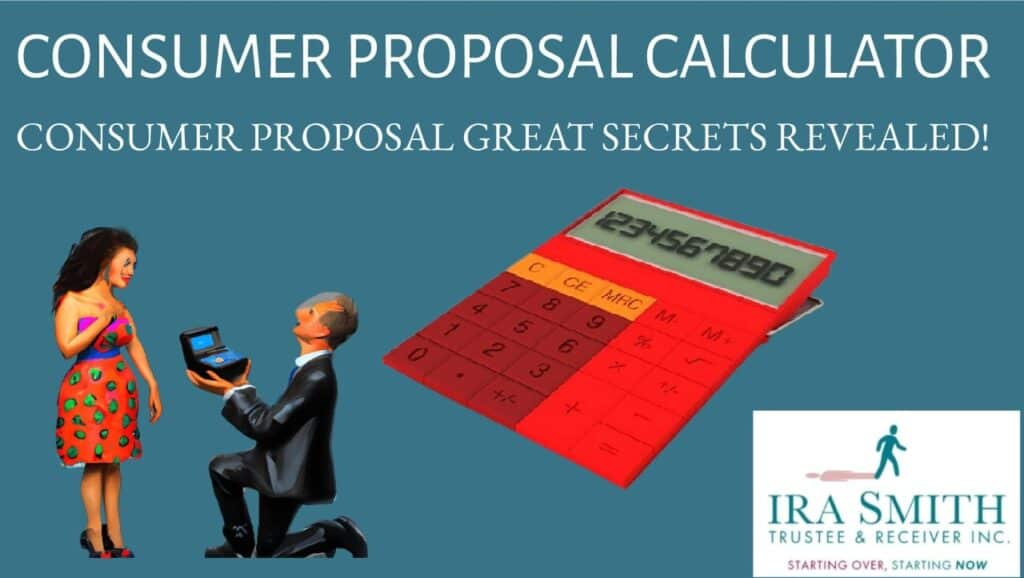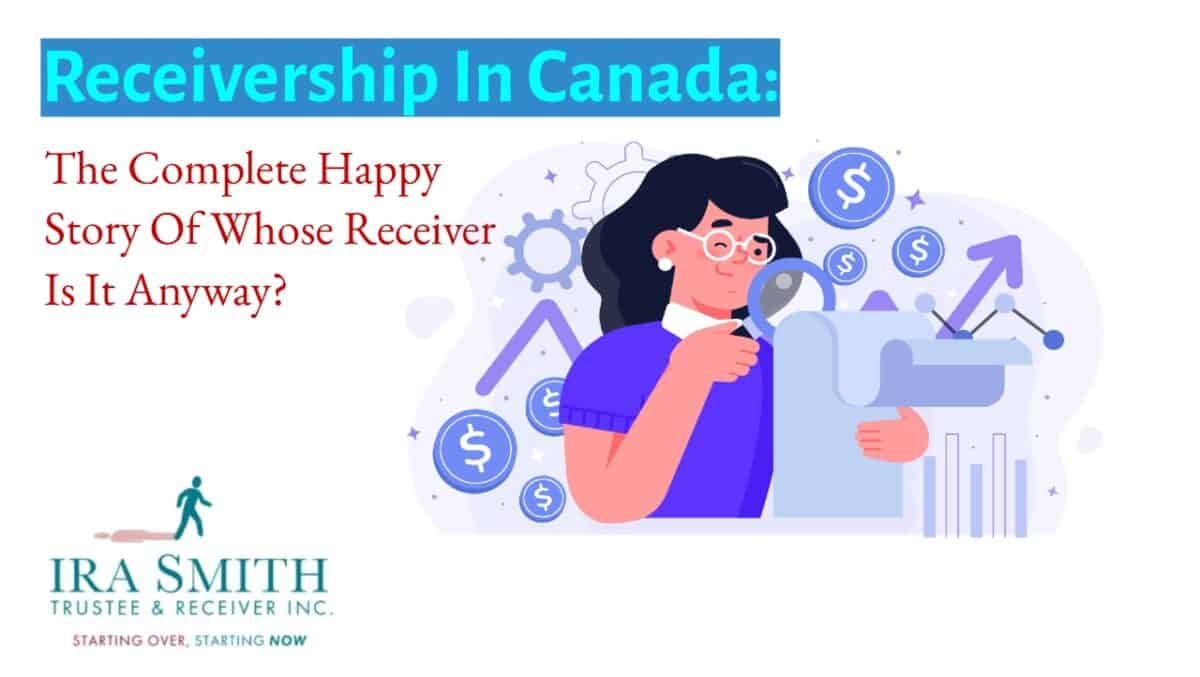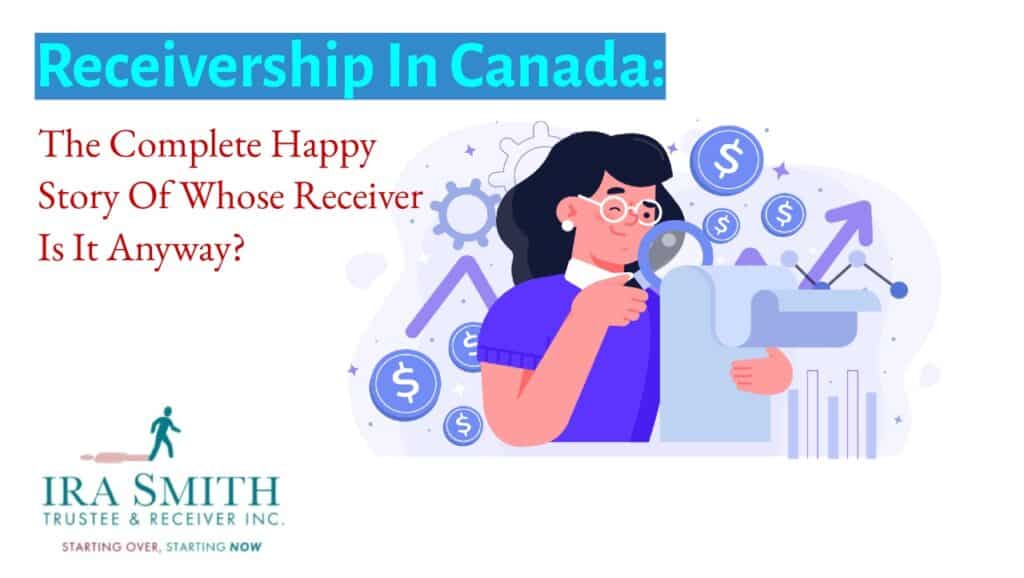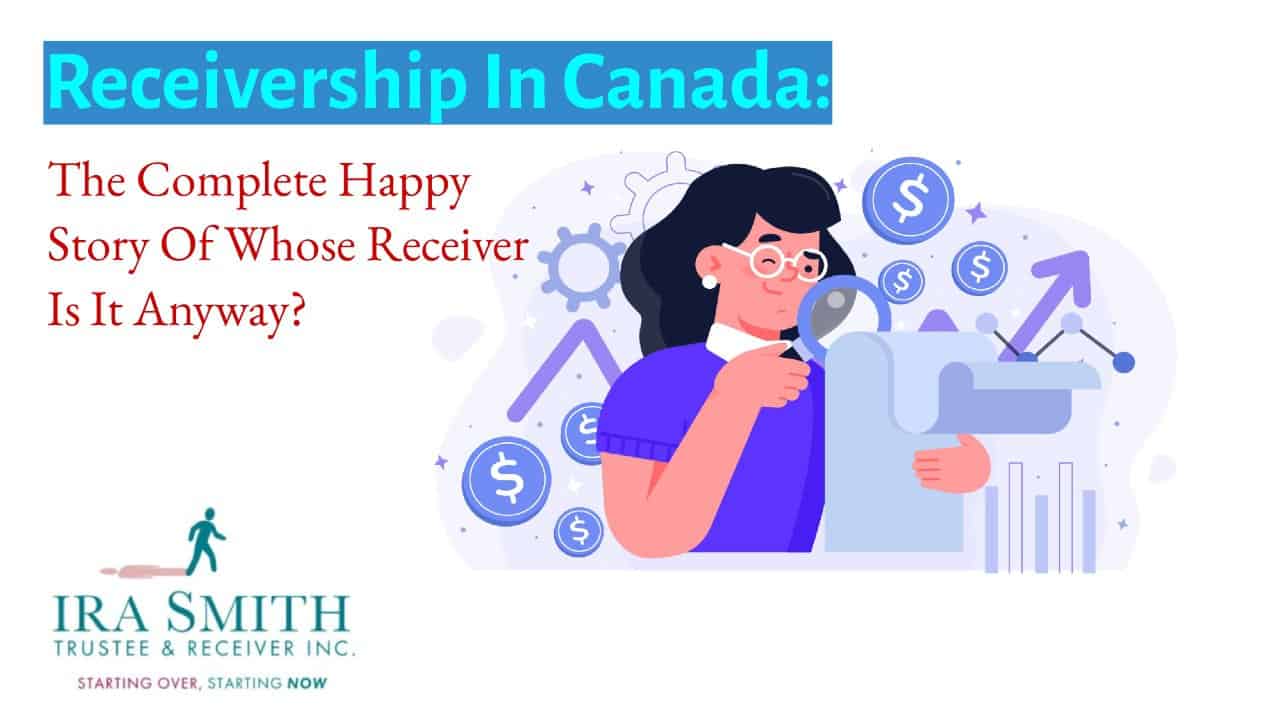Corporate bankruptcy in Canada: Introduction
Are you a business owner with company financial difficulties and apprehensive about the possibility of corporate bankruptcy and is it something that you will have to seriously consider? Corporate bankruptcy in Canada process can be complex and overwhelming, but understanding it is necessary for making authoritative decisions about your business.
In this Brandon’s Blog, I will analyze the ins and outs of corporate bankruptcy in Canada, including the different types, the steps in filing for corporate bankruptcy, the impact on creditors and shareholders, and alternatives to consider. By the end of this Brandon’s Blog, you will have a better understanding of corporate bankruptcy in Canada and be able to understand how to make the best decision for your business.
Explanation of what corporate bankruptcy in Canada is
The corporate bankruptcy process in Canada – otherwise known as commercial bankruptcy or incorporate business bankruptcy – is a legal means by which an incorporated business that is unable to pay its debts can be liquidated, and its liabilities discharged. This process allows the business to liquidate its assets and redistribute the value among its creditors. The process is intended to give an honest, but unfortunate corporate debtor a discharge from most debts while ending the business of that corporation.
It is important to note that corporate bankruptcy is different from personal bankruptcy which is a legal process through which an insolvent individual can substantially reduce debt and hopefully restructure. Unlike an individual who files for personal bankruptcy, it is not intended that the bankrupt corporation will come out of bankruptcy through a discharge process.
If single individuals are operating businesses and are considering business bankruptcy, then we are talking about the bankruptcies of sole proprietorships. If more than one person is operating a business partnership, then we need to think of the issues in a partnership bankruptcy. Either way, we have insolvent persons, which means personal bankruptcy, which is not the subject of this Brandon’s Blog.
It’s important to note that the process of corporate bankruptcy in Canada is complex and can only be handled by a licensed insolvency trustee. The Trustee will help you understand the process and the options available to your corporation and then prepare the documents required to submit the bankruptcy filing.
In Canada, if a corporation is bankrupt, it is subject to both the federal Bankruptcy and Insolvency Act (Canada) (“BIA”) and relevant provincial regulations. The BIA outlines the procedure for managing a corporate bankruptcy, while provincial law governs other aspects of the business such as labour laws.

A brief overview of how the process of corporate bankruptcy in Canada begins
Navigating corporate bankruptcy in Canada can be complicated, as there are numerous steps that need to be taken. To begin, it is important to consult with a licensed insolvency trustee to review the financial details of the company, including income, profits, liabilities, and any personal guarantees. From there, the next step is to determine the misogynist options.
The board of directors needs to hold a meeting, in order to pass a resolution permitting the corporation to file for bankruptcy. This process is initiated by a director, or the single director, who will then execute the necessary bankruptcy paperwork.
Types of corporate bankruptcy in Canada
There are two types of corporate bankruptcy in Canada: liquidations and reorganizations. Although a reorganization is not an actual bankruptcy, the phrase “bankruptcy protection” is used to describe a formal reorganization. So for the purposes of this Brandon’s Blog, we will consider both as types of bamkruptcy.
The type of corporate bankruptcy in Canada proceedings can often provide a good indication as to whether the unsecured creditors will get all, a portion, or none of what they are owed.

An overview of the 2 types of bankruptcy proceedings available to Canadian businesses
Liquidation
The process of corporate bankruptcy involves a business ceasing operations as it is unable to fulfill its financial obligations and the demand for its goods and services has become obsolete. This form of corporate bankruptcy is commonly referred to as liquidation.
Canadian bankruptcy proceedings must adhere to Canadian bankruptcy law under the BIA. This law contains similar liquidations to Chapter 7 of the U.S. Bankruptcy Code. Commencing the process of bankruptcy liquidation in Canada is the initial step.
It all starts with the board of directors of the corporation getting together and deciding to file for bankruptcy. One of the directors, or a single director, will then have to sign the official documents for the bankruptcy process.
Once the liquidation process has been initiated, the corporation’s assets, subject to the rights of any creditor having security over all or some of the assets, are taken over by the Trustee. The Trustee will sell the corporate assets and the proceeds will be distributed among the creditors according to the priority established by law. The corporation will then be laid to rest, as it will no longer operate as a legal entity.
Reorganization
Corporate reorganization is one of the alternatives to bankruptcy. It is a process in which a process for a company that is facing financial difficulties is able to restructure its outstanding debt and its operations in order to improve its financial situation. In Canada, the primary statutes for corporate reorganization are the Companies’ Creditors Arrangement Act (CCAA) and the BIA. These laws are similar reorganizations under Chapter 11 of the U.S. Bankruptcy Code.
The CCAA provides a thoroughfare of debt reorganization for corporations on a larger scale, as the amount owed by the company must exceed $5 million. Through this federal legislation, the debtor corporation can still operate while reaching an approved plan of arrangement with its creditors.
For corporations that do not reach this $5 million threshold, the Division I Proposal under the BIA can be utilized. The BIA provides for the restructuring of insolvent corporations and individuals.
The CCAA is a federal statute that allows for the sale of an insolvent business, with a reach that transcends the wideness of the whole Canadian nation and even extends beyond its borders.
The process of corporate reorganization under either the CCAA or BIA begins with the corporation filing for protection under the appropriate Act. In the case of the CCAA, the filing is with the court. Under the BIA, the filing is with the Office of the Superintendent of Bankruptcy Canada.
The debtor will then be safeguarded with all its possessions. Then, the corporation will be allotted a specified value of time – typically 30 to 45 days – to present a plan of arrangement. This plan must be approved by the creditors and the court in order to move forward. When the plan of arrangement is given the thumbs up, it can be set into motion.
So corporate reorganization in Canada is a process in which a company that is viable but is facing financial difficulties is allowed to restructure its business debts and operations in order to modernize its financial situation. The CCAA is mainly used for larger corporations and the BIA for smaller ones. Both legislations provide a process to restructure a company while under the protection of the court and it’s intended to be a way to save a company while protecting the rights of the creditors.
Advantages and disadvantages of corporate bankruptcy in Canada
Liquidation
Advantages of corporate liquidation using corporate bankruptcy in Canada:
- Allows an incorporated entity that is unable to pay its debts to file for bankruptcy, as per the BIA.
- Allows for the liquidation of resources and redistribution of that value among creditors, which can provide relief for the corporation and its creditors.
Disadvantages to bankruptcy and corporate liquidation using corporate bankruptcy in Canada:
- The Canada Business Corporations Act (CBCA) prevents a company in bankruptcy from seeking dissolution under the CBCA.
- Unfortunately, specific liabilities or obligations of the corporation are passed to its directors. This would put personal assets at risk.
- The process is time-consuming and may also be expensive.
- Unfortunately, the director’s reputation may moreover be tarnished in the process.
Reorganization
Advantages of reorganization under corporate bankruptcy in Canada:
- Can uplift profits and increase efficiency.
- Can extend the life of the business.
- Can modernize strategy and financial arrangements.
- Could be done informally without a court process by agreement between the debtor and its creditors or formally under either a proposal as outlined in part III of the BIA or a plan of arrangement under the CCAA.
Disadvantages of reorganization under corporate bankruptcy in Canada:
- It may not work.
- Decreased employee morale and concern among customers.
- Can be a significant time investment with potential setbacks in cash flow
- If the financial matters are so dire that a reorganization is not viable, the remaining option is full bankruptcy, which results in the liquidation of resources to pay creditors.

corporate bankruptcy in canada
Filing a voluntary assignment into bankruptcy for corporate bankruptcy in Canada
Overview of steps involved in filing for Corporate Bankruptcy in Canada
- Finding a Licensed Insolvency Trustee (formerly called a trustee in bankruptcy) (LIT) and retaining the LIT to make an informed decision about proceeding with bankruptcy.
- One of the directors (or sole director) will be required to execute corporate bankruptcy papers
Upon bankruptcy assignment, the LIT will notify business creditors of the bankruptcy proceeding. - Hold a meeting of creditors.
- Conduct a sale of assets.
- Carry out its other duties in accordance with the BIA.
Note: The above steps are a general outline and the specific process may vary depending on the case. It’s advisable to seek guidance from a licensed insolvency trustee and a legal professional to ensure compliance with the laws and regulations.
Essential paperwork and information
In order to file a voluntary assignment for corporate bankruptcy in Canada, and get to the point of holding the First Meeting of Creditors, the following documentation and information are typically required:
- Provide the LIT with the corporate minute book, seal and accounting records.
- Fully signed minutes of a validly held meeting of directors resolving that the corporation file an assignment in bankruptcy and appointing either a director or senior management person to be the Designated Officer to sign all bankruptcy documents and attend the First Meeting of Creditors.
- A completed Voluntary Assignment of the corporate debtor, prepared by the LIT and signed by the Designated Officer.
- The LIT prepared statement of affairs, reviewed, approved and sworn/confirmed by the Designated Officer, which includes information about the debtor’s assets and the names and addresses of all known creditors and the amounts owing to each of them.
- The LIT will take the necessary steps to lodge the paperwork with the Office of the Superintendent of Bankruptcy, who in turn will give the Certificate of Bankruptcy – marking the very beginning of bankruptcy proceedings in Canada. The moment the Certificate is issued will be the exact time the corporate bankruptcy in Canada is activated.
- The LIT then prepares the statutory notice to creditors which is mailed to all known creditors with a notice of the time and place of the First Meeting of Creditors will be held and also includes a proof of claim form for the creditors to complete fully and file with the LIT.
- The LIT will also prepare the bankruptcy notice to be placed in a local newspaper to advertise for creditors to contact the Trustee.
- The LIT prepares its Report on Preliminary Administration to provide necessary information to the creditors about the causes of the corporate bankruptcy in Canada, the available assets to be sold, if any and other important information. The LIT’s report is distributed at the First Meeting of Creditors.
In a voluntary assignment, the LIT is picked by the debtor. In an involuntary assignment, the LIt is suggested to and chosen by the court. In issuing the Certificate, the LIT choice is confirmed by the Office of the Superintendent of Bankruptcy. However, it is ultimately up to the creditors attending and voting at the First Meeting of Creditors to either confirm the appointment of the LIT or substitute the LIT with another one (don’t worry about the mechanics for now!). The LIT will be responsible for overseeing the administration of the debtor’s estate and distributing the proceeds to creditors.
It’s important to note that the above list is not exhaustive and additional documentation and information may be required by the Office of the Superintendent of Bankruptcy(OSB) or the appointed Trustee. It’s recommended to seek professional advice from a LIT, a lawyer or both, before filing for a voluntary assignment in bankruptcy.
The OSB plays an important part in the area of insolvency
The OSB is tasked with keeping orderly standards for the supervisory oversight of stakeholders within the insolvency process, creating an accessible archive of public records, compiling and analyzing data, and enforcing the BIA and CCAA regulations. Furthermore, the OSB is devoted to facilitating an effective and efficient insolvency framework in Canada.
The OSB in Canada is responsible for the supervision and regulation of the Canadian insolvency system, and overseeing the administration of all insolvency proceedings described as bankruptcies, commercial reorganizations, Division I commercial proposals, consumer proposals and receiverships.
The effects of corporate bankruptcy in Canada on creditors and stockholders
How corporate bankruptcy affects the distribution of assets among creditors
Divvying up resources among those owed money in a corporate bankruptcy in Canada can be quite intricate and can be affected by various elements, such as the kind of bankruptcy declared and the company’s ownership and organizational setup.
When a company files for bankruptcy, its day-to-day operations will typically come to a halt. All of the corporation’s assets will be sold off and the proceeds will be divided among its creditors. In Canada, this process can have a major impact on how the assets are divided up among those who are owed money.
The BIA requires the LIT to take control of all the unencumbered assets, sell them and assigns orders of importance to the many claims against the debtor. The net sale proceeds are then doled out to creditors depending on the priority of the claims.
In a nutshell, the types of creditors and the order of priority is:
- Trust claims, including unremitted employee payroll withholdings.
- Secured lenders.
- Preference is given to certain kinds of unsecured debt.
- Ordinary unsecured creditors are last.
In Canada, though the assets of a company are distinct from the owners’ individual wealth, banks will always take security on the company’s assets when loaning funds and anticipate the entrepreneur to provide some kind of collateral. It bears mentioning that this is a standard requirement.
Should the proceeds of the company assets fail to cover the bank debt in the event of a Canadian bankruptcy, the owners will be called upon to make good on their personal liability and may be faced with the liquidation of some or all of their personal belongings to make up the difference.
What sort of ramifications does corporate bankruptcy in Canada have on the equity holders and their privileges?
Generally, when it comes to bankruptcy proceedings, it’s usually shareholders who are left holding the shorter end of the stick. Most often, they don’t get anything back after all other creditors have been taken care of– leaving them with nothing but the realization that their investments have gone down the drain. Furthermore, they forfeit any rights they once held with the company.
If any of the shareholders are also in a director position, then they will have the added worry about whether there are any debts that are also a director liability. Legal advice is always required by directors of an insolvent company. In next week’s Bradon’s Blog, I will talk about recent developents arising from an Ontario court decision about the directing mind of a bankrupt corporation.
The one small solace they may have is that Canada Revenue Agency will acknowledge the corporate bankruptcy in Canada as a legitimate means of allowing shareholders to deduct the value of their shares as a loss on their tax return.

Alternatives to Corporate Bankruptcy in Canada
For a business that is viable yet unable to pay off its debts, there are 5 alternatives to corporate bankruptcy in Canada that must be explored:
- Implement tighter controls over spending and create a cash-flow budget to see if costs can be cut or eliminated, freeing up funds to pay off debts.
- Refinance existing debt in order to consolidate it into more manageable payments.
- The shareholders provide a fresh injection of funds.
- Informal out-of-court debt settlement through direct negotiation with creditors.
- Selling redundant or no longer-needed assets to raise cash for debt repayment.
Rather than going through the effort of reorganizing debt under the CCAA or BIA, a corporate workout is an amicable arrangement between the company and its creditors that allows them to come to a mutually-satisfactory resolution without resorting to legal proceedings and a reorganization court case. This is seen as an advantageous alternative to a formal filing.
If all other solutions fail to prevent a company in Canada from going bankrupt, then the CCAA or BIA’s restructuring provisions should be carefully considered to potentially save the company, its jobs and business assets.
If the company is not viable or profitable and is in a state of financial distress, then a secured lender can exercise their rights through a receivership process. This could be used in conjunction with a corporate bankruptcy in Canada if the situation calls for that.
The reasons why bankruptcy and receivership may be needed to work in tandem are complex and are best left as a topic for another day.
Corporate bankruptcy in Canada: Conclusion
I hope you enjoyed this corporate bankruptcy in Canada Brandon’s Blog.
Revenue and cash flow shortages are critical issues facing entrepreneurs and their companies and businesses. Are you now worried about just how you or your business are going to survive? Those concerns are obviously on your mind. Coming out of the pandemic, we are now worried about its economic effects of inflation and a potential recession.
The Ira Smith Team understands these concerns. More significantly, we know the requirements of the business owner or the individual that has way too much financial debt. You are trying to manage these difficult financial problems and you are understandably anxious.
It is not your fault you can’t fix this problem on your own. The pandemic has thrown everyone a curveball. We have not been trained to deal with this. You have only been taught the old ways. The old ways do not work anymore. The Ira Smith Team makes use of new contemporary ways to get you out of your debt problems while avoiding bankruptcy. We can get you debt relief now.
We have helped many entrepreneurs and their insolvent companies who thought that consulting with a trustee and receiver meant their company would go bankrupt. On the contrary. We helped turn their companies around through financial restructuring.
We look at your whole circumstance and design a strategy that is as distinct as you are. We take the load off of your shoulders as part of the debt settlement strategy we will draft just for you.
We understand that people facing money problems require a lifeline. That is why we can establish a restructuring procedure for you and end the discomfort you feel.
Call us now for a no-cost consultation. We will listen to the unique issues facing you and provide you with practical and actionable ideas you can implement right away to end the pain points in your life, Starting Over, Starting Now.
